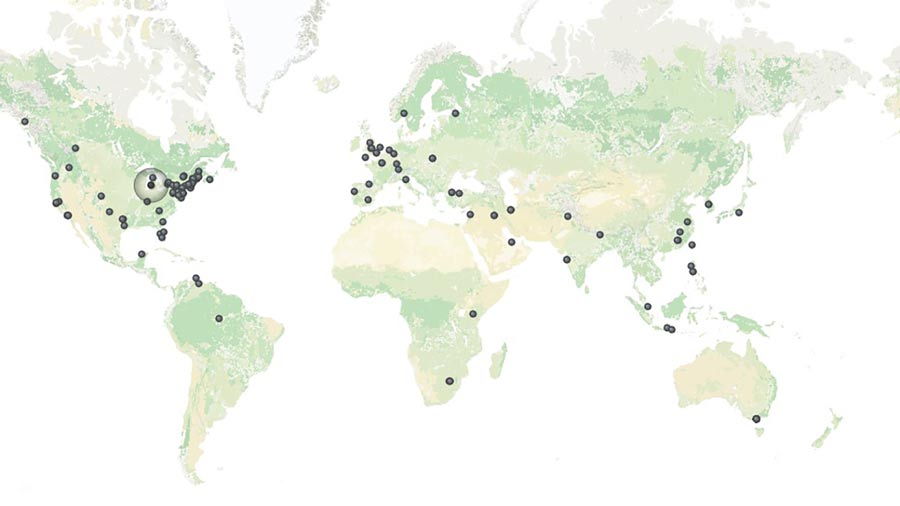
The Wild West of Open Access Publishing
A UMaine librarian guides graduate students in the world of open access publishing
Working with graduate students at UMaine provides a wonderful opportunity for collaboration between faculty and the librarians here at Fogler. This proved true in a seminar I held for graduate students enrolled in Dr. Laurie Connell’s course SMS 691: Professional Habits of Mind, a course focused on responsible conduct of research, ethical obligations and values in science, and professionalism.
While this course was offered through the School of Marine Sciences, the students represented several different departments on campus. Despite the different programs of study, a common learning objective among graduate students is to obtain a firm understanding of scholarly publishing practices so that they will be able to make informed choices when it comes to their own publication goals.
Being at the center of negotiating with scholarly publishers situates librarians to help graduate students reach these academic publishing goals. Accordingly, when it came time for Dr. Connell to teach the students about scientific writing and publishing, she asked me to lead the seminar for her class. Dr. Connell expressed that to her and her colleagues, open access publishing practices can seem like “the Wild West.”
This collaboration developed into an opportunity to place open access publishing at the center of a broader conversation. Once the curricular goals and the lesson plan started to develop, it became clear to me that UMaine librarians have a lot to offer the community in expansively talking about publishing in academic journals. Overarchingly, we talked about the ethical and professional implications intrinsically tied to journal publications.
Under the traditional subscription model, access to scientific discovery is limited to the resources available to your academic institution or the local, or state, public library. Academic journal subscriptions have skyrocketed in recent years. Between 2007 and 2013, the Research Data Alliance reported that inflation for journal subscriptions soared 37.6 percent. This inflation has led to unprecedented profit margins from many of the top publishers, including Elsevier, who, according to an MIT report, saw a profit margin of 39 percent in 2013.
Times Higher Education reports that even universities with large endowments, such as Harvard, have had to cut their subscriptions to scientific research.
In the face of such escalating costs, open access journals have become a more viable option for researchers. As graduate students consider the ethical implications of their research, and specifically where they publish their research, the inability of less well-endowed universities to access their publications is a crucial part of the discussion about open access.
Despite the obvious benefits to the global scientific community of open access publications, there remain many reasons why researchers would be reluctant to publish in open access journals. While many open access journals are gaining favorable reputations, there are an increasingly large number of predatory journals. Even among non-predatory open access journals, many publications have not had the time necessary to build up impressive reputations and rankings. Publishing in these journals could be detrimental to a young researcher’s career.
To make matters even more complicated, open access journals charge what is called an article processing charge in lieu of a subscription. These fees can be prohibitively expensive. Indeed, while self-archiving, or “green” open access, provides an alternative way to make publications open access, many of the top-rated journals in scientific fields are restrictive when it comes to green open access options.
To make the judgments necessary to publish as a young researcher, graduate students must become informed consumers of information. To facilitate this process, I designed a series of activities for the students that required them to closely evaluate various aspects of scholarly publishing. Before coming to class that day, Dr. Connell had the students complete an assignment I created that asked students to evaluate how federal grant-funded research treats open access.
In class, I worked with the students to separate the peer-review process, common to all reputable academic journals, from the publication models. They then worked in pairs to evaluate various open access journals based on positive and negative indicators. Students had to decide if they thought that the journal was predatory or reputable. This exercise was wildly successful, seeding a fantastic conversation about journal quality more broadly and serving as a critical step in learning how to evaluate information.
Cheyenne Adams, a University of Maine graduate student in marine biology and a participant in the seminar, immediately saw how the new perspectives could benefit her approach to publishing.
“As a fledgling scientist new to the publishing world and beginning to develop my own opinions, the open access class couldn’t have come at a better time in my career,” says Adams. “The class elaborated on the intricacies of open access such as historical context and individual publisher’s policies about open access, as well as other options that I, and all researchers, can pursue to make sure our work is accessible.”
Graduate students like Adams, most of whom are at the dawn of their careers, stand to benefit greatly from librarian partnerships in academic publishing. The current state of scholarly communications is a changing landscape, with both traditional publishing models and open access models proliferating globally. Seminars like SMS 691 and library/faculty partnerships help provide graduate students with the tools that they need to navigate the rapidly evolving academic environment.
When it comes to scholarly communications, these collaborations can also have a long-term impact. While not all graduate students will go on to careers in academia, those who do are poised to shape the future of access to scholarly works. While it is up to each individual to determine how to disseminate their research, librarians can help provide the information needed to make informed choices at every step of the way.
—
This story was originally featured in the 2016 Raymond H. Fogler Library Magazine.
